Best Cases | Feb 19, 2020
Journalism through the medium of TikTok and Instagram Stories
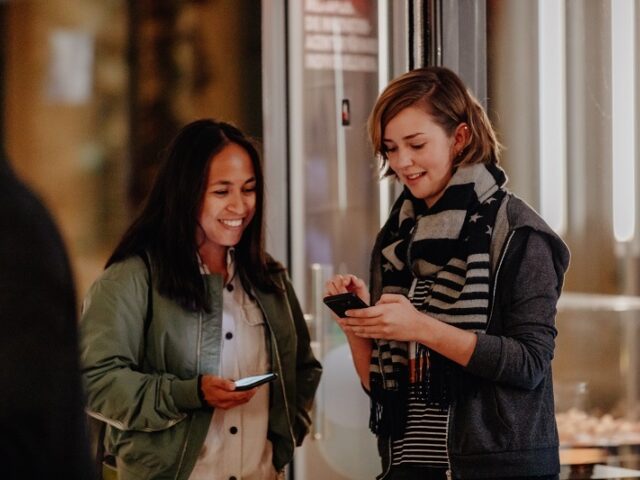
The Axel Springer Academy has explored the potential scope of journalistic reporting on TikTok with its HAWAIITOAST digital project. In preparation for the project, the students invited groups of school students to the publishing house to talk directly to the target audience about the content. The most surprising thing the students discovered: entertainment and fun videos were not necessarily the ones best received by the school students. More serious, exclusive stories that could have been published on a classic platform also rated well. One of the biggest highlights to date on HAWAIITOAST is an interview with 78-year-old Ute Henkel who was smuggled across the inner-German border in the hollow space of a Cadillac by her friend in the 60s. Study director Kristen Schulze: “We initially assumed serious journalism would take a back seat (for the young audience). But the exact opposite turned out to be true. They wanted to hear serious stories.”
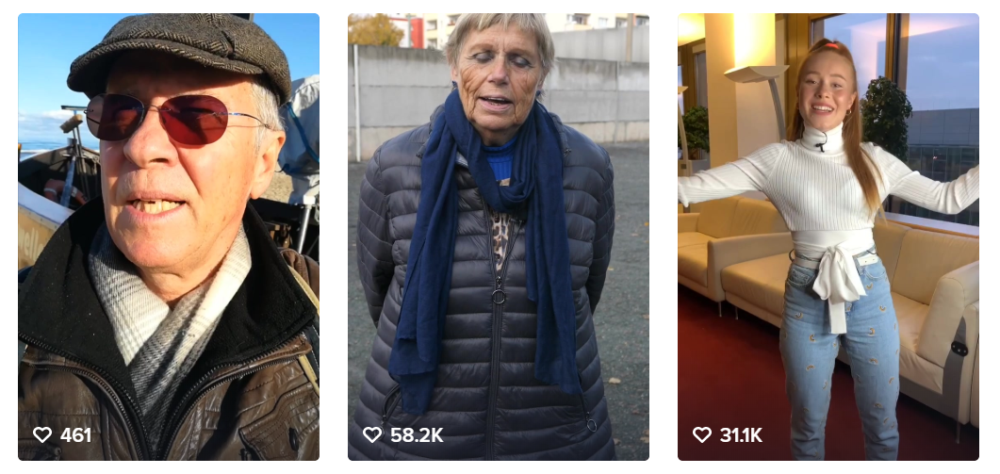
According to Schulze, the most important aspect was finding the right reporting style. The journalists would need to get to the point in record speed, even quicker than in online journalism. Each video is only 60 seconds in length. Every word, second and image was subject to intense scrutiny among the HAWAIITOAST team. Simply pressing record on a phone and becoming the next viral sensation isn’t how it works. For example, in order to record just 60 seconds on the story about escaping East Germany, the HAWAIITOAST editorial team met up with the protagonist several times.
The editorial team was also blown away by the extremely positive TikTok comments sections in terms of it being a social media platform: “We’ve strongly relied on the moderation of our reports. We knew from the get-go that we’d need to observe everything. But luckily we haven’t received much negative feedback. The younger generation is often far more friendly and kind to one another than you might think.”
Jamal Fischer, editor at the technology magazine CHIP can also testify for the expertise of the HAWAIITOAST team. A project is nothing without a concept. It's important to first ask the crucial question: How do I want to make everything my brand embodies appeal to the target audience on the platform?
The digital platform primarily inspires its community with cool phone tricks and other tech lifehacks interspersed with short comedy clips from CHIP's laboratory. It's clearly paid off: the channel has accumulated 100k TikTok followers in five months.
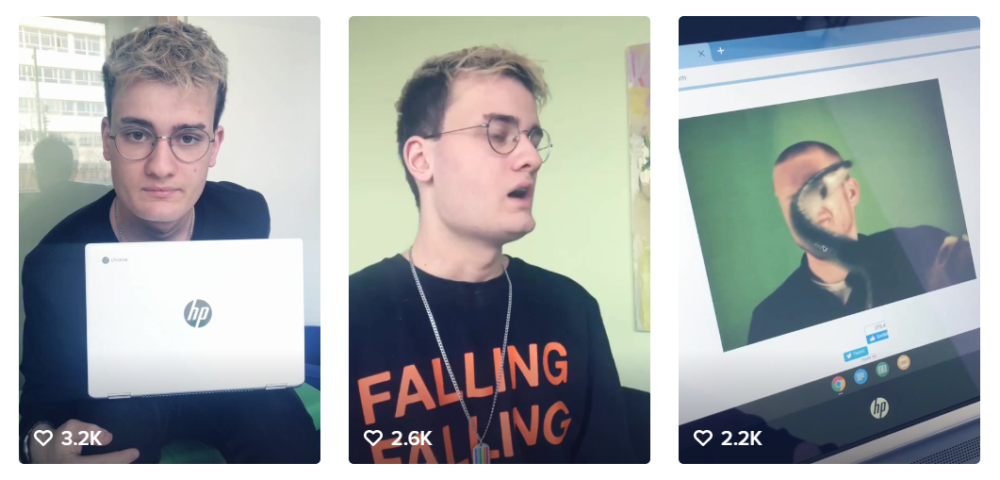
The second video released on the channel that explained how users could make their Android phone run faster proved to be a great hit. Ever since, the channel has increasingly grown in popularity. Fischer provides a friendly face to the channel that users can identify with in almost every video. However, he doesn’t believe that his personality has a major impact on the success of the channel: “The more time spent focusing on me, the less the videos work.”
According to Fischer, the intro is key to the success of a video: “Success hangs on the first two seconds.”
In other aspects, Fischer discovered that the TikTok community doesn't necessarily work like you may expect as an outside observer. When he launched the channel, the audience found that Fischer was too heavily reliant on video effects: “I thought video effects were popular on TikTok. But feedback from the users was clear: Less effects!”
Maximilian Nowroth, former editor at Handelsblatt, is the brainchild behind WasmitWirtschaft, a media brand that uses social media as more than simply an extension to a website. In fact, the company can trace its roots back to launching exclusively on Instagram. Nowroth wanted to interact with the target audience in their environment. He was also drawn in by the lower initial technical hurdles posed on the platform.
Over the years, Instagram has become more developed, claims Nowroth. “In terms of content, it's no longer just reserved for fitness, fashion or makeup.”
Starting in August 2019, Nowroth has built a strong follower base with over 2,000 followers who receive regular updates on financial topics through Instagram Stories.
The content primarily focuses on topics that affect young people in their everyday lives. According to Nowroth, social issues, social politics and the environment are more interesting to the target audience than conventional journalism topics such as finance or use value.
Nowroth spends five to seven hours each day creating stories. He can usually be found in front of the camera, but also regularly interviews people in person or as part of a live stream with smartphone recordings. He views himself as a pioneer who casts a light on people he finds important. The biggest achievement on his channel to date: An extended story during which Nowroth talks to homeless people.
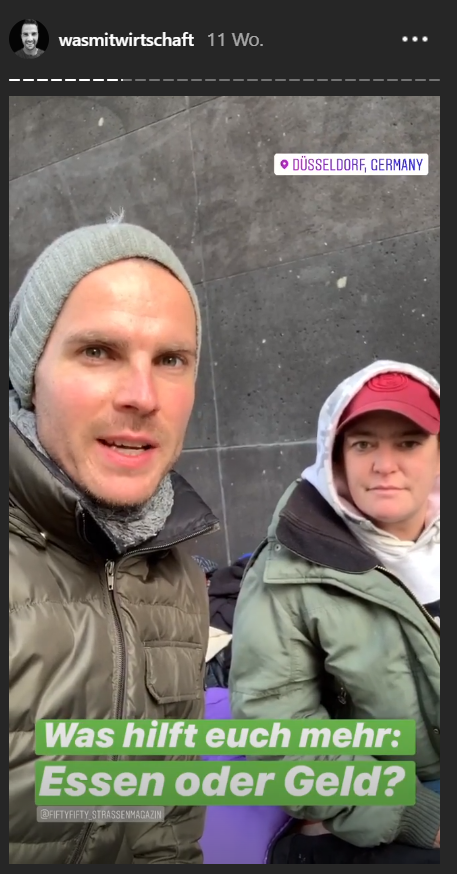
Nowroth is aware that the success of the channel is closely linked to him and his personality in front of the camera. His biggest lesson? Even if certain content in Instagram Stories comes across as spontaneous, success can only be achieved if stories are professionally produced. In August 2019, he let loose and, by his own admission, got a bloody nose. Now he knows that a certain look is required for success— paired with a dash of vanity.
In addition, a well produced Instagram Story needs to tell the whole story. Movement and regularly changing location can provide the required dynamism.
However, most importantly: “Authenticity is one of the key ingredients for success.”
“We already use an inspiring visual vocabulary. We don’t want this to be reserved to our website, but instead transmitted to a tool designed for this purpose.” This is just one of the reasons why Carly Laurence, Social Media Editor at DIE ZEIT decided to produce content for Instagram. The Instagram channel shared by DIE ZEIT and ZEIT ONLINE currently has 439,000 followers.
The editorial team primarily addresses socio political and scientific topics in the channel's Instagram stories. Users have responded well to campaigns that pose questions on a particular topic which are then answered by an editor, e.g., questions on alcohol or cannabis.
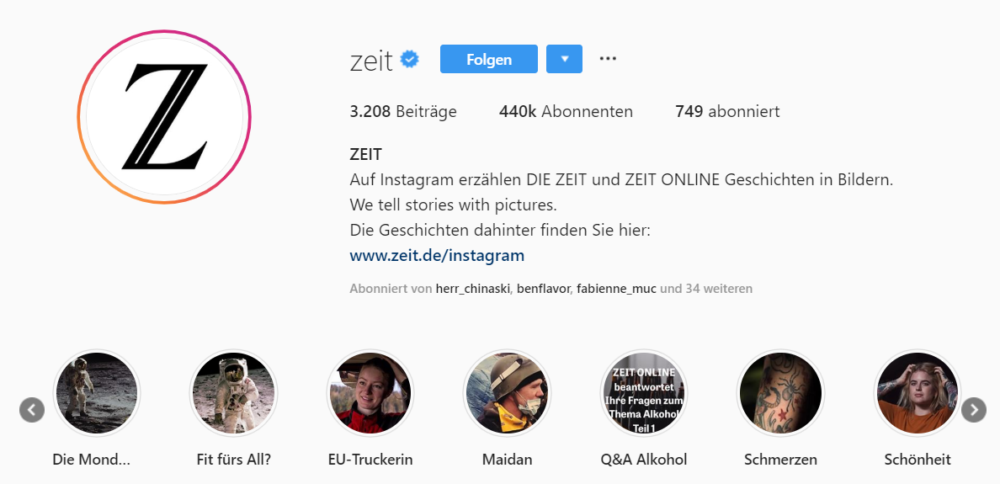
Instagram-Channel »Zeit online«
According to Laurence, followers of the ZEIT ONLINE Instagram channel feel listened to and understood. “It’s important that the community feels that they are interacting with us directly." In other words, “my message has been answered. I can communicate directly with the editorial team and ask questions.” In Laurence's opinion, it's not possible to put a price on the invaluable opportunities to interact offered by platforms such as Instagram: “Most editorial departments are aware of the need to engage with their readers. It can often be a lot of the work. But at the end of the day, getting involved with the community is worth it. Communication with followers is crucial to successful work.”
Interactions with users on Instagram have regularly opened the eyes of the ZEIT editorial team to topics that weren’t originally planned to feature on the channel. One key indicator to Laurence for the importance of channels such as Instagram when it comes to telling journalistic stories: “You can tell that people often rely on this platform to receive news.”
Everyone interviewed agrees on one thing: If you want to get in touch with young people, Instagram and TikTok are essential. Anyone who refuses to use a platform from the outset is not truly a journalist. It's important to confront the issue in line with the motto: Learn to love your topic.
Since October, six media pioneers have been working hard to research exciting challenges in terms of news platforms, streaming, blockchain solutions, the future of journalism and mobile storytelling for media companies as part of our R&D fellowship. We’ll be publishing the results of their research in our blog.
We’ll be offering the chance for you to research topics shaping the media industry and to experiment once again in 2020. Apply for a place in our R&D fellowship!


